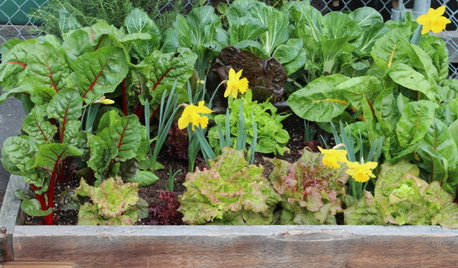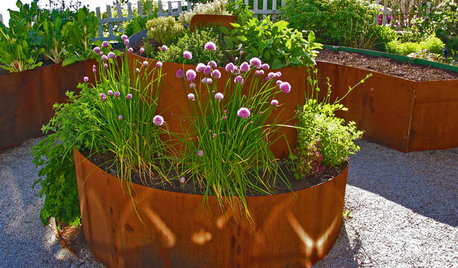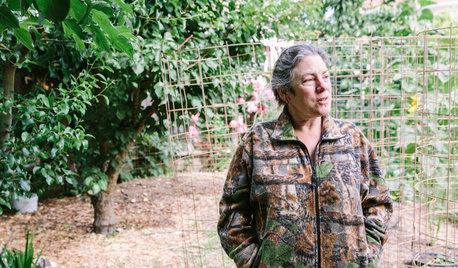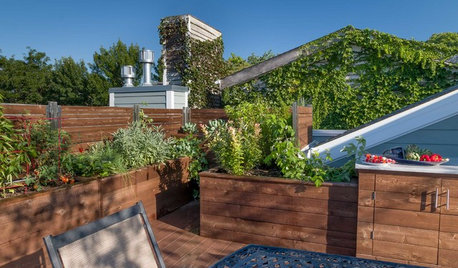Best 'Basic' Mix For Vegetable Growing SWC's?
donna_h
14 years ago
Related Stories

FARM YOUR YARDHow to Grow Vegetables in Containers
Get glorious vegetables and fruits on your patio with a pro’s guidance — including his personal recipe for potting mix
Full Story
EDIBLE GARDENSHow to Grow Your Own Sweet Summer Crops
This guide will help any gardener get started on growing the freshest warm-season veggies and berries for summer
Full Story
EDIBLE GARDENSSummer Crop: How to Grow Blueberries
Plant blueberries in spring or fall for garden beauty through three seasons — and a sweet superfood in summer
Full Story
FARM YOUR YARDGrow a Kitchen Garden in 16 Square Feet
Got a sunny 4-by-4 space? You can make meals more interesting with your own vegetables and herbs
Full Story
URBAN GARDENSContainers Make Growing Edibles a Cinch
If life hands you a lack of land, grow lemons — with a few basics, you can proudly reap the fruits, veggies and herbs of your labor
Full Story
GREEN BUILDINGGoing Solar at Home: Solar Panel Basics
Save money on electricity and reduce your carbon footprint by installing photovoltaic panels. This guide will help you get started
Full Story
EARTH DAYGrow a Beautiful Garden With Ecofriendly Greywater
Reducing home water waste means lower bills and a healthier planet. Here's how to set up a greywater home irrigation system that can help
Full Story
FARM YOUR YARDTo Get the Food They Believe In, These Urbanites Grow Their Own
Home gardeners farming on their city lots find that local, organic food isn’t the only reward
Full Story
HOUSEPLANTSHow to Grow Orchids Indoors
Orchids are the exotic aristocrats of the flower world and can make themselves comfortable in almost any home
Full Story
GARDENING GUIDES10 Tips for Beginning Gardeners
With a simple sketch, basic tools and the right plants, you’ll be on your way to growing your first flowers or edibles
Full StoryMore Discussions







justaguy2
rnewste
Related Professionals
Norfolk Landscape Architects & Landscape Designers · Comstock Park Landscape Architects & Landscape Designers · Lake Oswego Landscape Architects & Landscape Designers · Towson Landscape Architects & Landscape Designers · Canton Landscape Contractors · Del Aire Landscape Contractors · Oklahoma City Landscape Contractors · 07920 Landscape Contractors · Little Ferry Solar Energy Systems · Bridgeport Window Contractors · Dayton Window Contractors · Fernandina Beach Window Contractors · Jupiter Window Contractors · La Grange Fence Contractors · Oak Creek Fence Contractorsdonna_hOriginal Author
emgardener
rnewste
emgardener
rnewste
engineeredgarden
donna_hOriginal Author
emgardener
dangsr_grow
tapla (mid-Michigan, USDA z5b-6a)
dangsr_grow
justaguy2
tapla (mid-Michigan, USDA z5b-6a)
dangsr_grow
greenman28 NorCal 7b/8a